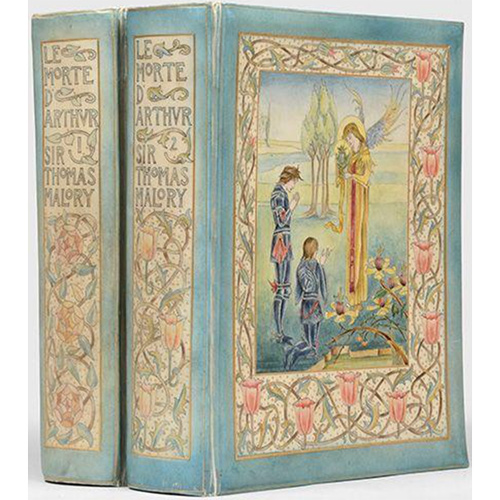
The two volumes of an illustrated edition of Le Morte D'Arthur, 1893
After receiving a copy of the Boy's King Arthur as a nine-year-old, one of America’s greatest writers and cultural figures, John Steinbeck, developed a lifelong fascination with Sir Thomas Malory's Morte d' Arthur, published in 1485.
In the latter half of the 1950s, having already won lasting fame as the author of Of Mice and Men, The Grapes of Wrath, and East of Eden, Steinbeck was seized by a powerful urge to return to his first great inspiration. Setting aside the American themes and places that he explored in his fiction, he wanted to translate Malory's Middle English into a slightly archaized modern English and to retell Malory’s stories from a more contemporary point of view. In this he failed.
Biographers and critics tend to dismiss Steinbeck's quest as a minor chapter in his life but public humanities scholar Clay Jenkinson, who is writing a book about Steinbeck and the Morte, believes that it deserves much more careful attention. Steinbeck spent almost a full year of accumulated time in Britain between 1956 and 1963 visiting Arthurian sites, doing painstaking research on the life and times of Sir Thomas Malory, and working with the world's leading Arthur scholar, Eugene Vinaver of the University of Manchester.
Jenkinson offers a fascinating look at the book that was to become The Acts of King Arthur and His Noble Knights and the tale of what began for Steinbeck as a straightforward work of translation and revision that acquired a life of its own, as he strove both to give new life to Malory and to use the tales of King Arthur as a medium for his own expression.
General Information